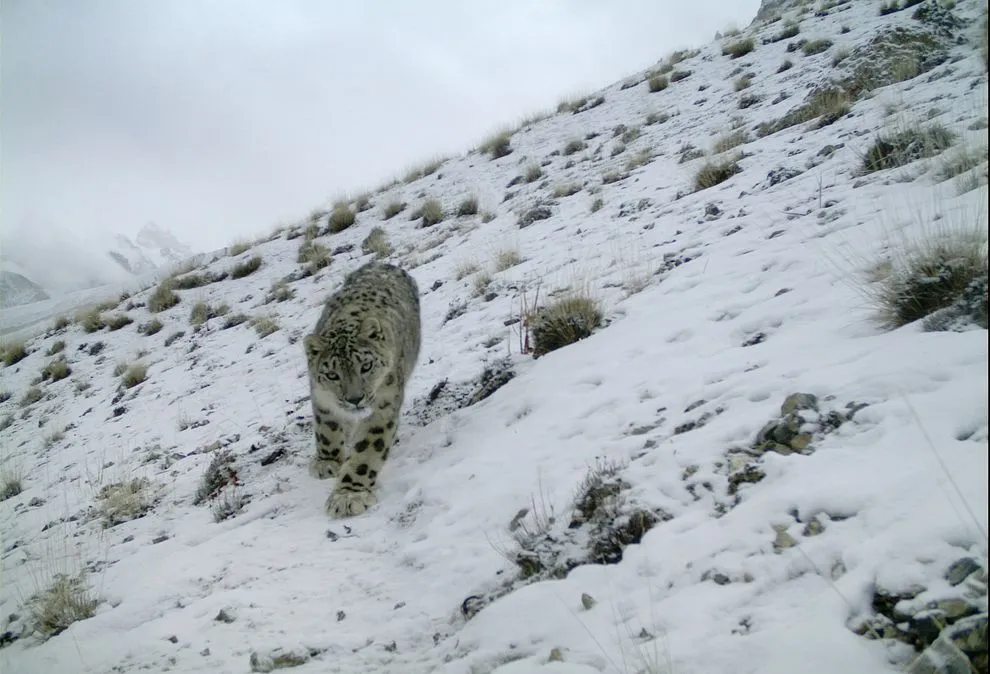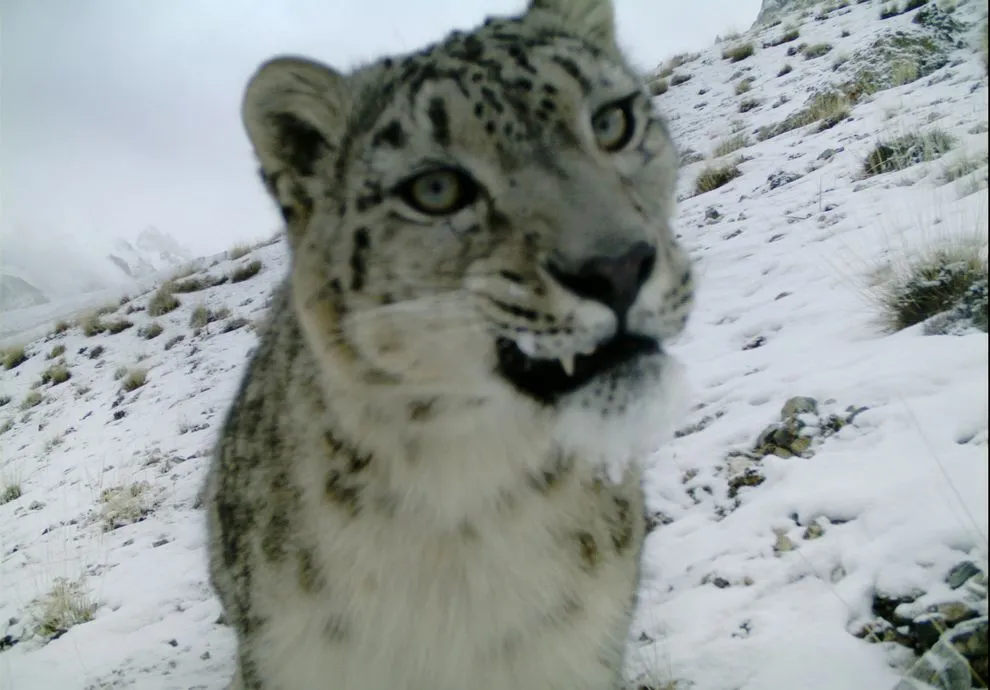The Elusive Snow Leopard, Caught in a Camera Trap
Researchers managed to capture images of notoriously elusive snow leopards in Pakistan
/https://tf-cmsv2-smithsonianmag-media.s3.amazonaws.com/filer/ec/4e/ec4ee4bf-5659-44db-b320-85af479b49b4/snowleopard-1.jpg)
Snow leopards are notoriously elusive creatures. In the 1970s, National Geographic published the first photos ever taken of the animals in the wild. And despite technological advances, the cats' remote, inhospitable habitats and their rarity (only an estimated 5,250 or so are left in the wild), the animals are still extremely difficult to catch on camera, NatGeo says.
But researchers can set traps for the cats—camera traps. With these tools, an international team of researchers and Pakistani volunteers have managed to again snap photos of the cats. They set up camera traps around northern Pakistan and used motion-triggered images along with scat (snow leopard poo) collected throughout the area to help estimate remaining snow leopard populations. Knowing how many of the big cats are still around can help local managers design ways to best ensure the animals stick around for years to come.
"Camera traps are becoming an increasingly popular tool for studying wildlife, especially rare and secretive species, such as large carnivores," said Richard Bischof, a researcher at the Norwegian University of Life Sciences and lead author of the study, in an email. "In addition, the photos that camera trap studies generate are a great outreach tool and give people a candid glimpse into the wild."
Here, you can see some of those images for yourself:

/https://tf-cmsv2-smithsonianmag-media.s3.amazonaws.com/filer/04/d3/04d3a959-f93e-400b-9770-eaac4e7eac6d/snowleopard-3.jpg)

/https://tf-cmsv2-smithsonianmag-media.s3.amazonaws.com/accounts/headshot/Rachel-Nuwer-240.jpg)
/https://tf-cmsv2-smithsonianmag-media.s3.amazonaws.com/accounts/headshot/Rachel-Nuwer-240.jpg)